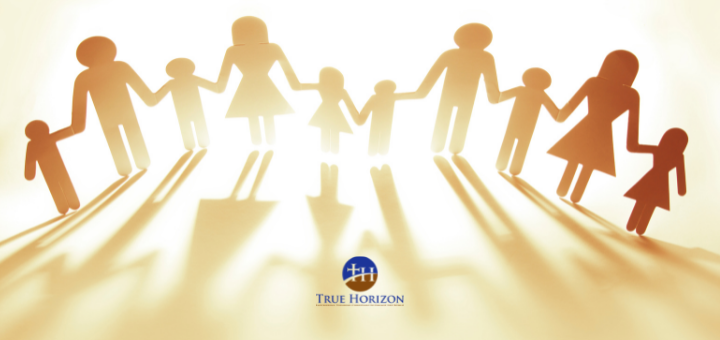Fertility Matters
Nicholas Eberstadt, the Henry Wendt Chair in Political Economy at the American Enterprise Institute, is a demographic expert. He has identified some sobering trends that are cause for concern for the future of America. In his article, “Can America Cope with Demographic Decline?”, Eberstadt points out that the traditional attempts to address those worries through government policy and financial incentives “vastly underestimate the challenge they wish to address.” They have never had a lasting impact. Real solutions will need to be centered “more on mindset than on money.” And traditional views of morality and family will be key factors in stemming the tide.
Going Lower
The birth rate required to support a society’s population stability is 2.1 births per woman. Eberstadt’s research found that in 2019, the birth rate in the U.S. was 1.71, the lowest rate ever recorded up to that point. Then, COVID-19 hit. In 2020, the rate fell to 1.64. Projected estimates for the as-yet-unreported first quarter of 2021 point toward another 5% decrease. These trends portend some challenging socioeconomic times ahead.
Some post-pandemic rebound may be expected, of course. But fertility forecasts are notoriously unreliable … there are reasons to suspect that U.S. fertility could actually decline even further in the years ahead … Decades of accumulating social and political dysfunction have left America less favorably poised for, and perhaps also less capable of seizing, the advantages of the new demographic era ahead of us.[1]
Fertility rates below 1.3 will halve a population in less than 45 years. And there is no documented case of a society surviving a rate that low at any time in history prior to 1990.[2] Depopulation trends have already started in Russia and Japan. Projections for the European Union show that theirs will begin in 2027. China could commence even sooner.
Financing Fertility
Typically, governments attempt to boost birth rates using financial incentives. But this has proven to be a faulty solution. Russia, China, Singapore, and Japan’s efforts to stimulate fertility using financial carrots paid small dividends in the short term. In each case, financial inducements had some impact on the timing of their citizenry’s birth decisions – they are most attractive to those at the lowest income and education levels. But, ultimately, they didn’t have much impact on the total number of births, which usually return to at or below their pre-stimulus levels once the incentive runs its course.
Cultural Headwinds
The prognosis for reversing these trends is not good. Several factors lead to that conclusion. As John Stonestreet has pointed out, radical feminism demanded that women be “liberated from their own creative potential” and can be directly connected to the inclination to postpone or forgo childbirth altogether.
Since 1980, the median age of first marriage has gone from 24.7 for men and 22 for women to 30 and 28 respectively. The additional six years for women puts them almost exactly at their peak fertility.[3]
But the Millennials who occupy that age category …
are of a markedly different mindset from that of their Boomer parents. Their lived experience is in a very different America. People under 40 do not have much memory of America with a vibrant, private-sector-driven economy. They came of age during a strange historical run of unusually poor political leadership … Theirs is an America where public confidence in the nation’s basic institutions has undergone a gruesome and wholesale slide.[4]
Religiosity, which has historically encouraged the pursuit of the traditional family, has also been a casualty of the cultural milieu. A Gallup poll earlier this year revealed that just 36 percent of Millennials report any religious affiliation. They likewise express pessimism about the country’s future, they lack pride in it, and they are increasingly unwilling to defend it. As Eberstadt puts it, young Americans have become “demoralized and de-moralized.”[5]
Resurrecting Marriage
There is a way out of this. And it depends on the same thing it always has – God’s design for marriage and the command to “go forth and multiply.” Mark Regnerus addresses these issues in his book, The Future of Marriage, wherein he acknowledges all of the above. His research points out that “young Christians are significantly influenced by the culture around them … [and] have a sense of swimming upstream in their efforts to marry and form families.”[6] But, despite all this, he argues that:
Marriage as an institution has changed very little … On these points, young Christians are substantially similar to their parents and grandparents. They have not lost sight of the value of lasting love. Fundamentally, they know what it means to wed … If marriage is so deeply written into our nature, it probably won’t disappear … the young will go on looking for love, and the world will still be peopled. Civilization will continue.[7]
These kinds of motivations don’t come from the government. That’s Nicholas Eberstadt’s point. He is cautiously optimistic that a “spontaneous, intellectually and spiritually disruptive ferment from within civil society might offer a homegrown American answer” to our demographic decline.
Subscribe to Salvo!
This article first appeared on the Salvo blog on January 13, 2022
You can subscribe to Salvo magazine here: Subscribe to Salvo





